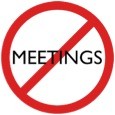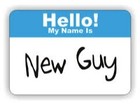Building an Innovation Culture
Learnings and Take-Aways from Patty’s Pioneers – Fall 2014 Meeting
For over 20 years, Patty Seybold has gathered a group of tech-savvy leaders who call each other “Patty’s Pioneers.” The pioneers all have amazing track records in creating new platforms, products, and businesses. How do they do it? There are practices they have in common. Do you follow these practices? If and when you do, you should achieve similar successes.
NETTING IT OUT
Patty’s Pioneers is a group of tech-savvy innovators who have in common the way they deal with complexity, manage people, and design solutions. They work in a variety of different industries. They’ve been meeting regularly and hanging out together online since the late 1980’s. We had our most recent face-to-face meeting in early September 2014 in Boston.
At every meeting, each member provides an update on what he or she has been working on, how he did what he did, what he learned along the way, and what insights he gained.![]()
There are always patterns of commonalities that strike me as I listen to all of these stories. One recurring pattern is how these Pioneers cultivate a culture of innovation. Some of them work in entrepreneurial start-ups. Others work in big established companies. But all of them have similar stories to tell about what works.
BUILDING AND NURTURING A CULTURE OF INNOVATION
Build and Evolve Shared Mental Models
Patty’s Pioneers’ don’t rely on vision and mission statements. They draw pictures. They not only map out product and information architectures, but they focus a lot on vocabulary and semantics. What does “risk” really mean to us (and our customers)? What are the nouns and verbs that accurately depict the subject matter domain for the customers we serve? How does their use evolve over time? What does that tell us about how the world is changing and the context is shifting?
Eliminate Meetings
How can people get anything done when they spend their days in meetings? Pioneers believe in the “less is more” approach. They may have one brief “touch base” meeting each morning. It’s action-oriented. It serves to keep things moving without bottlenecks.
Frequent, Short Contact with Clients/Customers
Co-habiting with end-users or customers is preferred. In that case, a great approach is several one-minute face-to-face encounters per day. “What do you need?” or, “Here’s what I’ve done for you.”
Have Learners on Every Team
Each design and delivery team is small and agile. It includes very experienced people as well as at least one person who is new to the game. That person brings a fresh perspective to the team and keeps people from making assumptions, since everything needs to be conveyed clearly enough for the new member to understand what’s happening.
If Product Development Slows Down, Remove Someone from the Team!
Large teams don’t work. Small teams are better. If the team isn’t able to get things done quickly, start...(more)
(Download the PDF to read the entire article.)
Sign in to download the full article
0 comments
Be the first one to comment.



